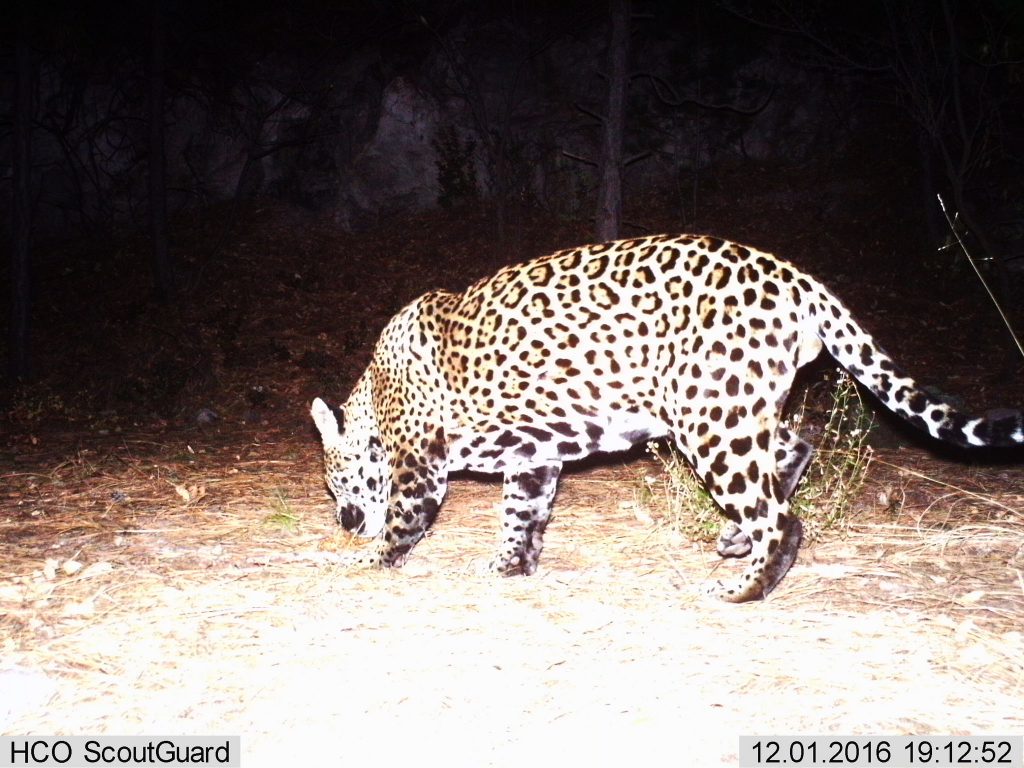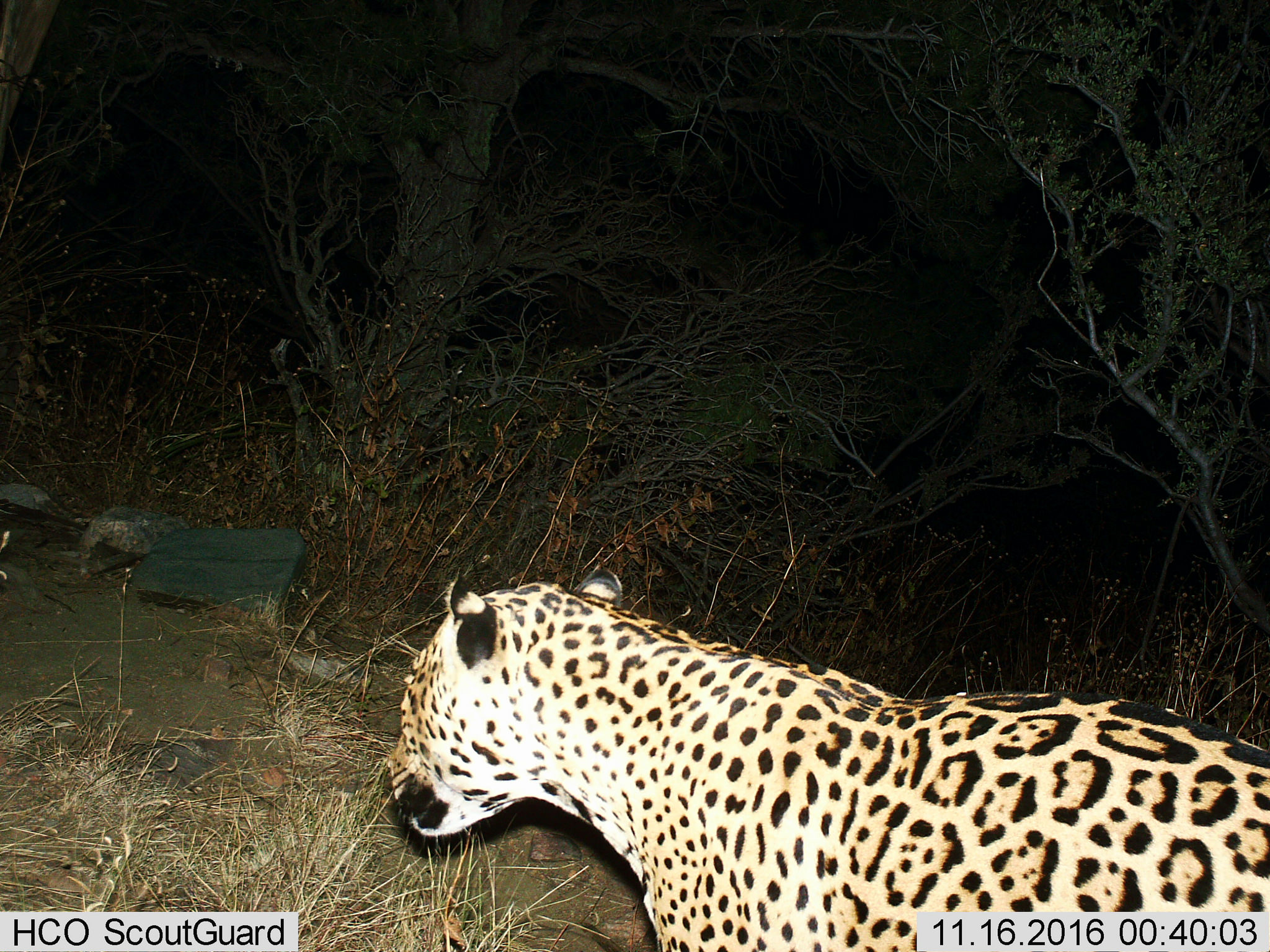A Bureau of Land Management (BLM) deployed trail camera has captured images of what is believed to be yet another jaguar roaming the mountainous terrain of southern Arizona.
The image, which was taken on November 16, 2016, was retrieved from the camera site last week and released jointly by the U.S. Fish and Wildlife Service, Arizona Game and Fish Department and Bureau of Land Management.
“Since 2012, an increase in trail camera monitoring of mountainous habitat in southern Arizona has provided increased documentation and a better understanding of jaguar presence and habitat preferences,” said Steve Spangle, U.S. Fish and Wildlife Service’s Arizona Field Supervisor. “This supports the phenomenon that jaguars seeking territories outside of competitive breeding areas in Mexico continue to occasion Arizona.”
“This is a unique development. Jaguars are a historical component of Arizona’s wildlife diversity,” said Jim deVos, Assistant Director for Wildlife Management at the Arizona Game and Fish Department. “However, given the irregularity with which jaguar presence in Arizona is documented, even with the expanded use of trail cameras, this sighting is not an indication that jaguars are establishing a population in Arizona.”

“BLM-managed public lands in the vicinity of the Dos Cabezas Mountains provide an important wildlife corridor and landscape linkage to the northern end of the Chiricahua Mountains,” said BLM Safford Field Office Manager Scott Cooke. “We are excited that we were able to document the jaguar utilizing public land and are pleased to share that information with our partners at the Fish and Wildlife Service and Arizona Game and Fish Department.”
A team of scientists with Arizona’s Game and Fish Department analyzed the image, and by comparing spot patterns and markings, were able to determine that this particular animal had yet to be identified. While scientists are able to differentiate jaguars by their markings, they were not able to determine the sex of the animal from this image alone.
The previous two sightings were confirmed to be males, and many believe this one to be a male as well, strictly based on the fact that they are known to disperse more widely than their female counterparts. These animals have all originated from the Sonora region of Mexico that is home to a reproductive population of these large felines.
Images: Arizona Game and Fish Department




